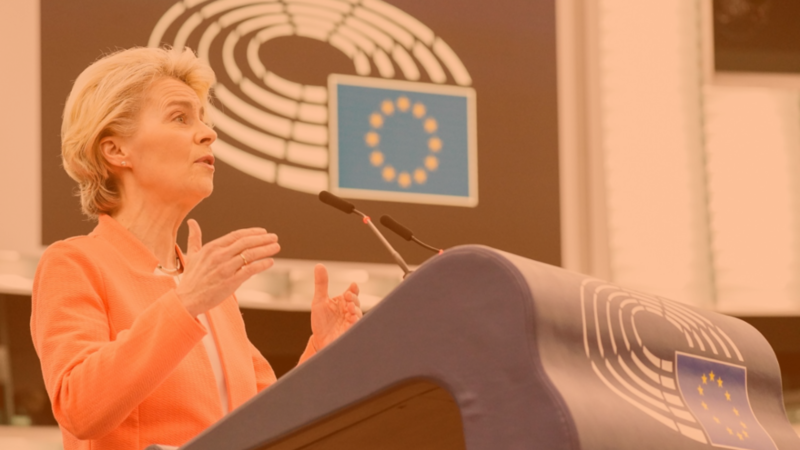Economics is sometimes portrayed as a contest between saltwater and freshwater, between the coastal pseudo-Keynesians and the Great Lakes neo-Walrasians, between the flaws-and-friction model-builders and the free-market hard-liners. As evolutionists know, both habitats are fairly sterile. Evolution occurs in the backwaters, in the mudflats, bogs, lagoons, cypress swamps and wetlands, in the shadows of perpetually endangered habitat. In this article I will sketch my personal journey through the backwaters. Intellectually they are my home, as they have been for every other recipient of the Veblen-Commons prize, with just one exception.
The exception was my father, who lived and worked on high ground, which he reached out of nowhere or more precisely Southern Ontario and Giannini Hall, by a unique combination of gifts including practical knowledge of price control and strategic bombing, the principled and imaginative use of state power under emergency conditions, and surpassing grace in command of the English language. But the high ground was barren ground. John Kenneth Galbraith’s influence spread around the world but it could not take root at home.
My father’s lasting gift to me has been a solid sense that an economist is either a practical player in policy battles or nothing at all. Economics is not a theology of the human condition. Nor is it a branch of pure logic, however much the attempt to make the notion into grist for undergraduates may warm academic seats. Catherine the Great had it right in 1765 when she chartered the Free Economic Society of Russia, suppressed in 1917, revived in 1982 and of which I’m the only known American member, and endowed it with the logo of a beehive and a one-word motto: “Useful.”
At Berkeley in 1969 one lecture, by Abba Lerner, did not deflect me from French literature and the anti-war movement. Then at Harvard I took my first economics course from Wassily Leontief, from whom I absorbed a fascination with hierarchical category schemes and matrix algebra, two misleading guides to the field, which spent thirty years in remission before breaking out to decorate a research agenda. I also became, uselessly, an expert on the production of ammunition for the Vietnam war.
In a year at Cambridge I saw Sraffa on his bicycle, absorbed enough capital theory to be inoculated against production functions, skirted the theatrics between Hahn and Robinson as much she inspired reverence and terror, drew close to Kaldor on the eve of his great last stand against Thatcher and monetarism, was amused by the geometric pyrotechnics of Richard Goodwin, entranced by the beautiful matching of Sraffa to Keynes in Pasinetti’s lectures, and admired Adrian Wood’s quasi-Galbraithian theories of profit and wages. Adrian, my tutor, to whom I owe a deep debt, also sensed the barrenness of high ground, and soon gave it up for the World Bank and China.
Henry Reuss extracted me to Washington in June 1975, just in time for two great events. One was the invention of the Conduct of Monetary Policy hearings, soon re-christened Humphrey-Hawkins, the first formal and regular congressional oversight of the Federal Reserve. They were my baby for five years, and they led to the “dual mandate” – full employment and price stability – the most Keynesian and most successful charter of any central bank. The other was the New York City financial crisis, the dawn of disaster capitalism, three weeks into my Hill career. I was thrown into it at 23 and never emerged, a life-long ambulance chaser of debt debacles.
Of my PhD years at Yale, 1976-1979, little comes to mind – routine drill on dying topics, logic-chopping whose flaws I already understood. Sid Winter generously lent his protection. With help from Lucy Ferguson, for a dozen years my wife, I explored numerical taxonomy and applied it to budget expenditure categories in a thesis only one person ever read: Paulo Du Pin Calmon, now of the University of Brasilia, who became my first PhD student and would help launch the inequality project. Otherwise I diverted myself, a week each month, by going back to Washington and the Banking Committee to skirmish with the resident monetarists and to harass the central bankers, from Arthur Burns to Paul Volcker, and eventually to Maryland for a year, marked most by a first major paper, a comparative institutionalist study of credit and industrial policies in France, West Germany, Great Britain and Sweden, published by the Joint Economic Committee in 1981.
Then the Revolution came. A dog’s breakfast of damaging dogmas – supply-side economics, monetarism, deregulation and privatisation, each among the rising academic doctrines of the previous
decade, softened in ultimate effect only by an aggressive tax-cut and military Keynesianism. The problem of the early Reagan revolutionaries was not that they were academically disreputable as many claimed, but that they actually weren’t. At the Joint Economic Committee we fought them all, cooks and bakers in the front lines, backed by stalwarts like Bob Eisner, Walt Rostow – and also great luminaries, Tobin, Leontief and Klein, who appeared together in 1982. The New York Times ran their picture on the front page with a caption, but no story; I was shattered until my Republican colleagues emerged from their offices, one by one, to offer strictly professional congratulations. A policy triumph followed: the collapse of monetarism, and a political triumph, 26 House seats in the 1982 midterms, aided by ten percent unemployment. It was enough to stall the revolution, for a time.
Thereafter the economy recovered but the damage was done. The rise of finance and technology, disinflation, globalisation, debt peonage and the decline of industry, the rise of bicoastal inequalities, and the rusting away of the Midwest, giving rise first to Clinton and then to Trump – for all of these the course was set by Reagan and Volcker in the early 1980s. And the dogmas too morphed and lived on, shapeshifting zombies reinvented as exportable commodities in the form of the Washington Consensus, inflation targeting and neoliberalism, each eventually squeezed dry of doctrine until only the policy shells remain – tax cuts, central bank independence, fire-sale privatisations, deficit – and debt-aversion, all too useful to require the foundation of thought.
I came to Texas as the Old Institutionalists – Ayres, Gordon, Marshall – were fading out. Yet their ethos lingered even if few could detect it. For me the path forward lay in merging Institutionalist mesoeconomics with Keynes’s monetary-production economic space-time, modelled on Einstein – a thought planted by Skidelsky at Rostow’s poolside – and the lot with Leontief’s matrix-sensibility, eigenvectors and eigenvalues complete, to complement neoclassically-inflected econometrics with a non-parametric paradigm revealing the half-hidden structures in economic data. Peter Albin caught the gist and urged me forward. All this was far beyond my abilities but somehow just the right group of students coalesced at just the right time – from China, Portugal, Korea, Mexico, and later on Spain, Belarus, India, Sudan, Colombia, Argentina, France, Poland, and Iran.
Two currents emerged from this work. One applied numerical taxonomy to time-series vectors, notably wage change, reconstructing industrial and national-income classification schemes to distil the underlying structural affinities revealed by co-evolution through time. Steven Weinberg told me this was “cladistics.” We combined it with the extraction of discriminant functions – eigenvectors and eigenvalues complete (!) – which isolate and rank the dominant forces of economic change in each place and time. A referee reported that “economists do not use these techniques.” Seismologists, I later learned, had worked them out to distinguish earthquakes from nuclear explosions.
The second current was the measurement of economic inequalities from administrative statistics – payroll and employment records, mostly – using a generalised entropy measure, the between-groups component of Theil’s T statistic. The advantages of this Institutionalist approach are depth, range and precision, with results that largely mirror the best household surveys but with dense and consistent matrices of measures, suitable for panel analyses using standard techniques, from which time-and space patterns emerge with great clarity, showing on a global scale how debt and exchange-rate crises and regime changes drive inequality up, and how better export prices, lower interest rates and sustained social-democratic growth can bring it down. After an early presentation to the American Philosophical Society in Philadelphia John Archibald Wheeler came up to encourage me; my circle back toward economic space-time was complete.
Our approach to inequality has proved impossible to ignore entirely – it’s easy, cheap, accurate and replicable. It can be applied to many problems; most recently Jaehee Choi and I have shown how US states with the greatest increases in inequalities drift toward Democrats in presidential elections. But the larger point is the relocation of distributive analysis from labour markets and micro theory to macroeconomics on a global, interdependent scale, driven by structures of financial hegemony and power. Once again extracting information from matrices, this empirical and descriptive work yields a merger in practice of Keynes, Minsky, Galbraith père and Pasinetti, with distributive dynamics and a potential to unify economic analysis under an Institutionalist, Post Keynesian, Structuralist, MMT common front, buttressed by evidence and an expansive research agenda. Charles Saunders Peirce on Kepler comes to mind, that his gift to astronomy lay in impressing on men’s minds that the thing to do was to sit down to the figures and work out what the places of Mars actually were. Once again, the mainstream turns a deaf ear, to this day the macroeconomics of inequality – let alone the global macroeconomics of anything – does not exist in the JEL classification codes.
A further and ongoing evolutionary development is an elaboration, with Jing Chen, of the biophysical principles that must underpin a unified, reconstructed economics as they do every living and
mechanical system. Only through this lens can economics understand scale, duration, resource costs, climate change and above all the essential role of regulation, without which mammals die, machines break, companies fail and banks and financial systems melt down. Our metaphors are already biophysical, somehow our thought and teaching and research should begin to catch up.
Still and finally, at least for now, an economist must be useful. For an academic like a politician this means taking your chances as they come along. In 1989 I helped to trigger debt default and the Brady Plan in Brazil, making of Luiz Carlos Bresser Pereira a lifelong friend. From 1993 to 1997 I was of some use as Chief Technical Adviser for Macroeconomic Reform and Strengthening Institutions to the State Planning Commission of the People’s Republic of China, my advice was largely to steer clear of Western economists and above all, not to open the capital account. Those results speak for themselves. Economists for Peace and Security kept me busy for twenty years. In 2015 I joined Yanis Varoufakis in Greece’s struggles against debt peonage and neoliberal austerity; we continue to work together on Democracy in Europe, the Green New Deal and the Progressive International. In 2017 I lectured in St Petersburg on the pragmatic economics of John Kenneth Galbraith, on the centennial of the storming of the Winter Palace and the 50th anniversary of The New Industrial State.
And when Bernie Sanders who does not need my advice becomes President next year, I’ll throw in with him for what it may be worth. I have hopes for a better world, free of imperial delusions, maximally demilitarised, authentically democratic, not too unequal, working together on common problems, saving the planet for a while longer. Well, anyway, one can dream.
Thank you very much.
Remarks by James Galbraith n receiving the Veblen-Commons Award of the Association for Evolutionary Economics. More information.
Do you want to be informed of DiEM25's actions? Sign up here















